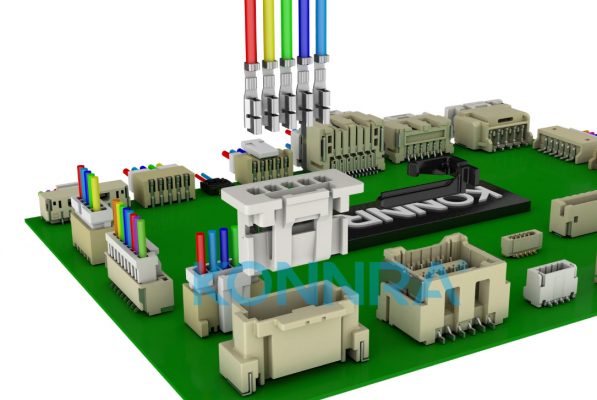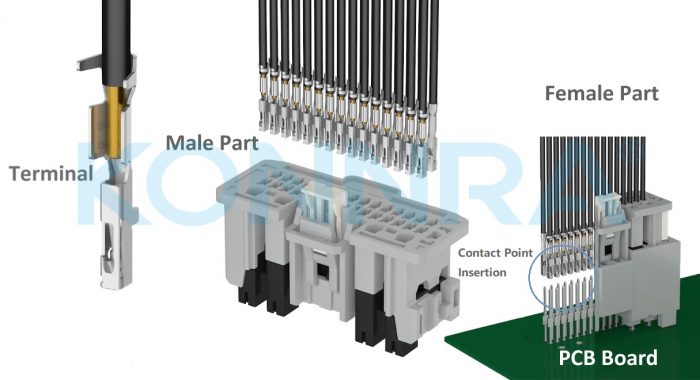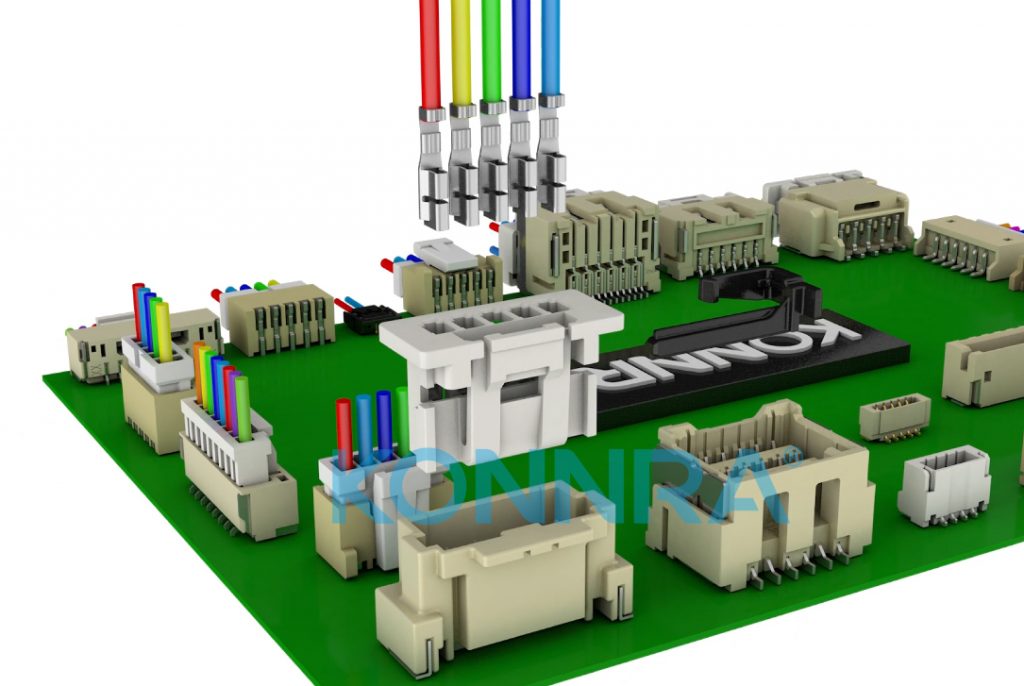A pin connector is an electrical connector used to connect two electronic devices or circuit boards in an electrical circuit.
It usually consists of a female base and a male head. The male head has multiple metal pins, and the concave base has a corresponding number of slots with contacts. When the pins are inserted into the slots, they can come into contact with the contacts, thereby completing the circuit connection.
Pin connectors are commonly used in applications that require frequent disconnection and reconnection, such as computers, audio/video equipment, and avionics. They are easy to use, quick to connect and reliable, and devices can be easily replaced or upgraded.

Pin connector function A pin connector is an electronic component whose main function is to connect wires, cables or other devices in a circuit. Pin connectors can connect multiple wires or devices to a centralized location, allowing circuit connections and control pin connections. Generally, pins and wafer are composed of two parts.
A pin is a metal rod that is usually attached to the end of a wire or cable and plugs into an outlet. A wafer is a set of metal sockets, usually connected to a circuit board or other device, into which pins can be inserted to establish an electrical connection.
Pin connectors come in many different shapes and sizes to accommodate different types of wire and circuit applications. They are often widely used in electronic equipment, automobiles, robotics, aerospace and other industrial fields. Due to its easy installation and replacement, pin connectors are widely used, making equipment maintenance and repair more convenient.
How to wire pin connectors

- Pin connectoris a common electronic connectorused to connect wires or devices in circuits. The specific steps for wiring are as follows: 1. Prepare a pin connector and the wire to be connected. The pin connector usually consists of a plug and a socket. The plug has pins and the socket has jacks. The insulation layer of the wires that need to be connected should be stripped off to a certain length in advance to expose the metal part of the wires.
- Determine the corresponding relationship between the plug and the socket. Normally, the number of pins on the plug and the number of jacks on the socket should be the same, and the pins and jacks should correspond one to one. If the number of pins or sockets on the plug and socket are different, or if the pins and sockets do not correspond, the connection may not be correct.
- Insert the pin into the socket, align the pin on the plug with the hole on the socket, and then insert the plug into the socket with appropriate force. During the insertion process, make sure that the metal parts of the pin and the socket are in full contact to ensure the reliability of the circuit connection. Confirm that the connection is successful; after the connection is completed, you can gently shake the plug and socket to check whether they are firmly connected.
If the plug and socket are loose or won’t connect, they will need to be reconnected. It should be noted that the power supply should be disconnected before wiring to avoid dangers such as electric shock. Additionally, you should select the appropriate pin connector based on your specific connection requirements and read its instructions carefully.










